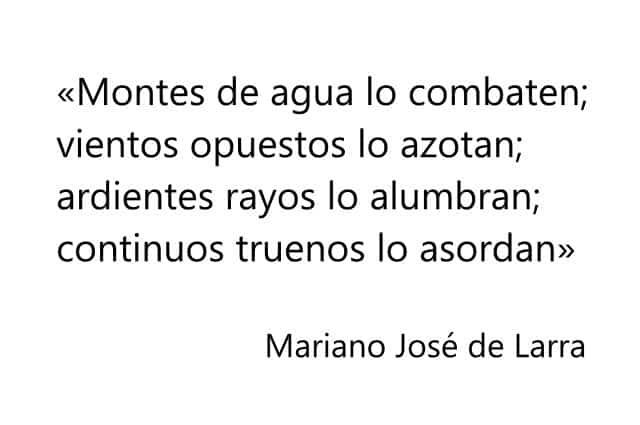
Example of similarity by Mariano José de Larra
The concept of similicadence is formed from the Latin word simĭlis (which translates as “similar” ) and the term cadence (rhythm). The notion refers to the use, at the end of two or more clauses, of verbs in the same person and tense or mood or of adjectives or nouns that end in a similar way .
Figure of speech
Similicadence is a figure of speech . In fact, it can also be said that it is a figure of elegance , more specifically of those achieved by similarity , since the similarity between the terms generates an aesthetic effect.
It is interesting to note that clauses are usually made up of nouns and verbs that are not always used in the same context, that may or may not be related outside the limits of similarity, but that in this case give a particular result because their meanings complement each other, they are linked to contribute together to the same idea.
There is a well-known example by the 19th-century Spanish writer Mariano José de Larra that is very didactic in explaining the aesthetic effect that similarity can generate (we can see it in the image above). First, let us note the elements that are related to each other, even outside this work or the figure: “mountains, winds, lightning” and “thunder” are all part of nature and appear together when a storm occurs.
Now, the similarity in this case begins by bringing together four nouns that could also appear in the same sentence outside the realm of literature; however, the verbs they are associated with do not have the same degree of affinity with each other: «combatar, azotar, alumbrar» and «asordar». Regardless of the fact that they can all describe the actions of these elements , both material and symbolic, they would not be seen together in an informative text, for example. We can also point out that only the first clause has a compound adjective («de agua»), while the other three have a simple one («opuestos, calientes» and «continuos»).
Phonic resource
Similicadence is also mentioned as a phonetic resource , since it is based on the musicality of words . When acoustic elements are combined in the right way, euphony is produced: a sonority that is pleasing. Similicadence seeks to make sounds not only allow expression, but also contribute to aesthetic enjoyment.
Just as similarity can bring a particular degree of elegance to written text, so too can sound. Moreover, the effect of the repetition of certain structures on our brain is such that it accentuates the meaning of words, recording them in a different way, because it associates them with intonation.
Some examples
Below we present three example sentences in which similicadence is applied to understand the effect it achieves in appearance and, when pronouncing them, in sonority: “Passionately kissing, madly screaming” , “Faceless men look at him, dark clouds chase him, sinister creatures stalk him” , “To win you have to jump, squeeze and fight” .
As you can see, the similarity creates a certain rhythmic regularity. It is important that the use of similarity is accurate. Otherwise, the desired brightness does not appear and the text loses thickness.

The similarity generates an aesthetic effect but also a sound one.
Origins and exponents
Pedro Calderon de la Barca, Juan de Salinas and Castro, Manuel Machado y Gabriel Celaya son algunos escritores famosos que han apelado a este resource en creaciones literarias de su autoría.
The key to similarity is the fact that it uses the same inflection . This figure reached its greatest impact between the 15th and 16th centuries , especially in the field of prose.
